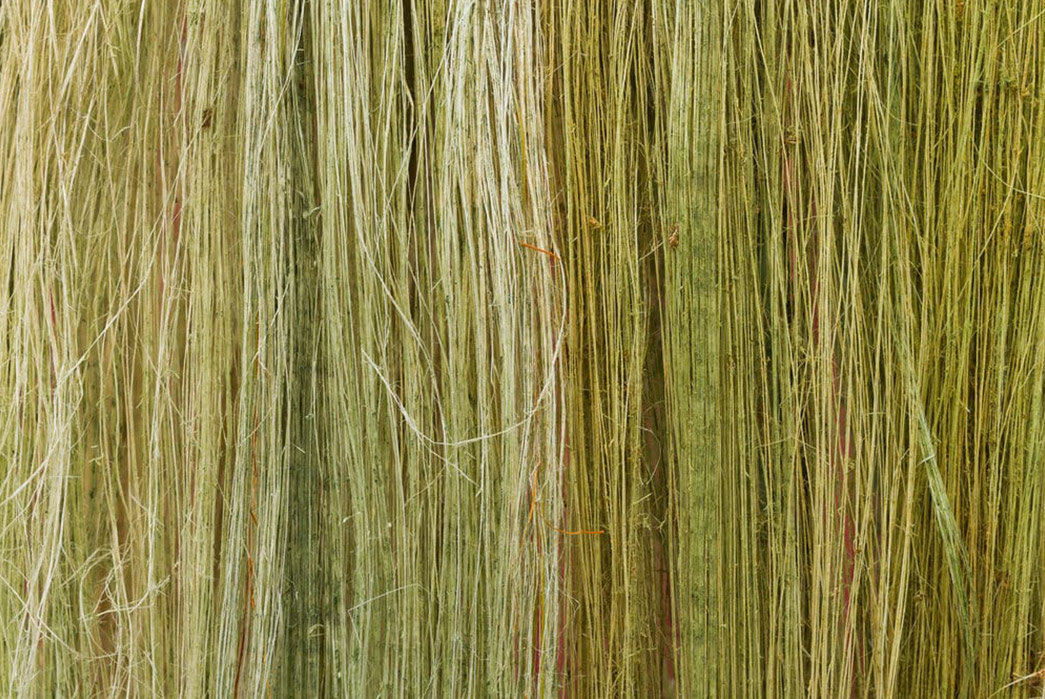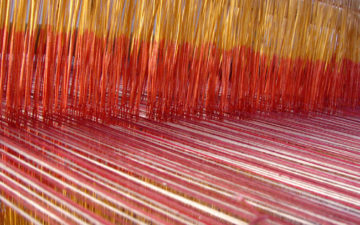The simplest building blocks of clothing are the fibers that are ultimately spun and woven into textiles, whence our clothing is cut and sewn. This may seem a patronizing reminder, but it’s all too easy to overlook these humble pieces in the larger fashion jigsaw puzzle.
Though the layperson might not spend much time ruminating on the fibers in their clothing, many of the most important advancements in modern technology have involved synthesizing new manmade alternatives to the classic textile fibers that we have used in clothing for thousands of years.
The invention of synthetics like nylon, polyester, and spandex have radically changed the clothing industry and now, nearly two-thirds of the textiles produced globally are made from these synthetics. These relatively recent inventions have become so integral to our daily lives, that you probably don’t spend an awful lot of time thinking about them or where they come from.
Oddly enough, a close examination of these landmark manmade fibers might just cause you to pivot back to the all-natural ones. Unless you’re climbing a mountain or HALO-jumping, these high-performance fabrics aren’t necessarily necessary. Read on as we weigh natural and synthetic fibers in the balance, and see which is found wanting.
Natural Fibers

Flax Stems for making linen. Image via Mungo.
Natural fibers are gleaned from naturally-occurring plants and animals. Though they may not be as futuristic or purpose-driven as the onslaught of synthetic materials on the market, they do channel the properties of the substance from which they are derived. And like anything in nature, these fibers decay, but they do so naturally. If they didn’t slowly wear away, how would you get those fades in your 100% cotton jeans?
For everyday wear, these natural materials ought to get you where you need to be. Cotton, silk, hemp, bamboo, linen, leather, feathers, wool, and rubber are all naturally-occurring materials and unless they’ve been irresponsibly processed or dyed, there’s no risk of absorbing dangerous chemicals through your skin. (A risk you sometimes run with synthetics.)
Natural materials naturally break in, so they become more comfortable with wear, and usually look better as the fibers start to degrade a bit. You buy a wool sweater, hoping that in a few years it will be stretchier, softer, and look a little more like you than when you bought it.

Worker in China with bamboo. Image via Pulitzer Center.
Natural substances are not without their dark side, however. When was the last time you walked into a department store? Did you notice the racks upon racks of “disposable” clothing? All the cotton, all the leather has to come from somewhere. It takes a great deal of physical space and toil to get these natural materials from the earth.
The new high demand for bamboo, for example, makes an extremely versatile fiber and has caused a great deal of China’s forests to be destroyed. Though natural fibers may be less problematic in terms of manufacture, they must come from somewhere. The materials derived from animals, like silk, leather, feathers, and wool, may not be done in an entirely ethical manner. And even when your cotton or linen might seem natural and fair-trade, there may have been a variety of pesticides used on the crop, or toxic dyes or other processes used later on in the manufacturing.
In the grand scheme, however, all natural materials are typically less environmentally damaging than their manmade counterparts. Though manufacturers and growers may be exploitative, you can easily shop for natural materials that are cruelty-free or free of toxic dyes and pesticides. Their greatest drawback is their performance in specialized circumstances… no natural fiber will ever be as waterproof or bulletproof as anything made in a lab.
Synthetic Fibers
The journey to creating today’s synthetic fibers was an intriguing and highly flammable one. The earliest artificial fibers actually used naturally occurring substances (cellulose), which was broken down and reformed into rayon and cellulose acetate, which could be used as a substitute for the rarer and much more expensive silk.
It wasn’t until the 1930s that the first truly synthetic fiber was created–nylon. Another silk replacement, used in stockings and wartime parachutes, nylon would form the basis of most other synthetic fibers. Nylon uses a petrochemical base, which is polymerized and can be spun into a thread, like that seen above. The resulting fibers are incredibly strong and depending on the chemical compound used, these petrochemicals can be transformed into any variety of synthetics: polyester, spandex, acrylic, etc.

All polyester. Image via Montgomery Ward.
These synthetics can do things that natural fibers simply can’t. They can be engineered to be completely waterproof, or super-stretchy, or sweat-wicking. Scientists in the lab can tweak these materials until they’re primed for a very specific task. But unlike natural materials, which become more wearable as they decay, synthetics, when they break down, are typically unwearable. It’s much harder to repair a Gore-Tex raincoat than a waxed cotton Barbour. And though these fabrics are often cheaper and don’t require physical farmland or animal by-products, they’re basically made from fossil fuels, which can be far more environmentally harmful.

Oil Refinery. Image via Thoughtco.
If people don’t want to wear cotton against their skin because it might have pesticides, then these same people must really hate petroleum-based fabrics. Very few studies have been conducted about the penetration of chemicals from synthetic clothing into our skin, but a study from the U.S. Library of Medicine in 2018 found that is very easy for us to absorb harmful chemicals through our skin, just by wearing a garment.
Synthetics also have supplementary chemicals to make them waterproof or flame-retardant which can also be harmful. Sweat-wicking synthetic fabrics can actually hinder your toxin release by preventing you from sweating, which can cause more lingering health risks than a damp shirt.
To Synth or Not to Synth?

Deforestation. Image via Live Science.
Unfortunately, there’s no fully guilt-free buy in the world of fibers. Everything manufactured comes with a price. This price may be at the expense of your health or at the expense of our planet, but this is for you to decide. The most ethical choice would be to never buy anything new, but we know that isn’t necessarily possible. It is also hard to shop in a health-conscious way because most brands aren’t especially transparent about things like chemical use and the health risks of wearing their clothes.
An educated consumer can limit their negative impact on themselves and the world around them, but maybe we had best just buy second-hand unless we absolutely need something new. And when you’re out shopping, take a moment to check out what’s in the blend of your new clothes and resist the temptation to buy for the here and now – try to buy in a way that can help to secure your future and that of our planet.
Lead image via Fine Art America.





